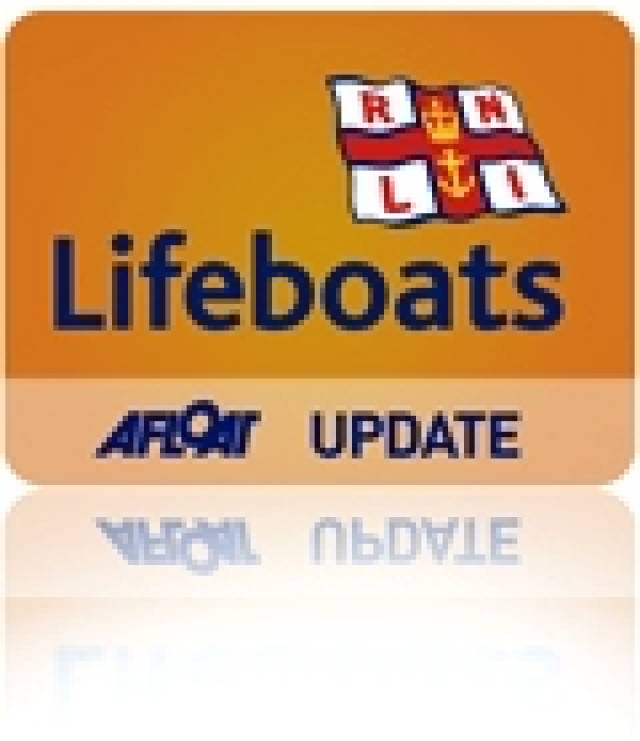#RNLI - Howth RNLI rescued a party of tourists yesterday afternoon (Monday 14 July) after the passenger boat they were on got into difficulty on the north side of Ireland’s Eye.
The volunteer lifeboat crew was alerted at 3.25pm following a Mayday call that a 30ft passenger boat had ran aground onto rocks and was taking on water.
Weather conditions at the time were described as good, with a westerly Force 2 to 3 wind blowing.
The lifeboat, under coxswain Fred Connolly and with four crew members on board, made its way to the scene a mile and a half away from Howth Harbour.
On arrival at the scene, Howth RNLI observed that another boat had come to the assistance of the casualty vessel and was holding it in position ready for the lifeboat to come alongside. It then emerged that the stricken vessel was not taking on water.
The lifeboat crew proceeded to transfer all of the tourists from the passenger boat safely onto the lifeboat, before establishing a tow line and returning the vessel and its occupants safely to Howth Harbour with no medical assistance required.
Further north in Co Dublin, Skerries RNLI were even busier in the weekend days before, responding to two separate callouts to vessels in difficulty.
Shortly before 5.30pm on Friday (11 July) the volunteer crew launched their Atlantic 85 lifeboat Louis Simson following reports of a small motor craft broken down off Donabate beach.
The lifeboat, with David Knight at the helm and crewed by Rob Morgan, Joe May and Eoin Grimes, proceeded directly to the area where they quickly located the motor craft with two people on board.
Conditions on scene were calm with a Force 2 southerly wind. A tow was established and the vessel was brought safely to Howth.
The second callout came shortly before 10.30am on Saturday (12 July) when Dublin Coast Guard requested Skerries RNLI launch to assist a yacht that had fouled its propeller North of St Patrick's Island off Skerries.
The lifeboat launched with David Knight on helm and Conor Walsh, Rob Morgan and Stephen Crowley also on board. There was a Force 1 northerly breeze at the time of launch and visibility was slightly reduced due to a misty rain.
The lifeboat quickly located the 13m yacht, which had fouled its propeller on a lobster pot. The volunteer crew managed to free the yacht and tow them safely to Skerries Harbour, where they then freed the remaining obstruction from the propeller.
Skerries RNLI's third launch of the weekend was less urgent but no less important, as the volunteer crew carried out their regular training exercises on Sunday morning (13 July).
Speaking of the callouts, Skerries RNLI volunteer lifeboat press officer Gerry Canning said: "It was a busy weekend but our volunteers are always ready and willing to drop whatever they are doing to help anyone that is in difficulty at sea."































































